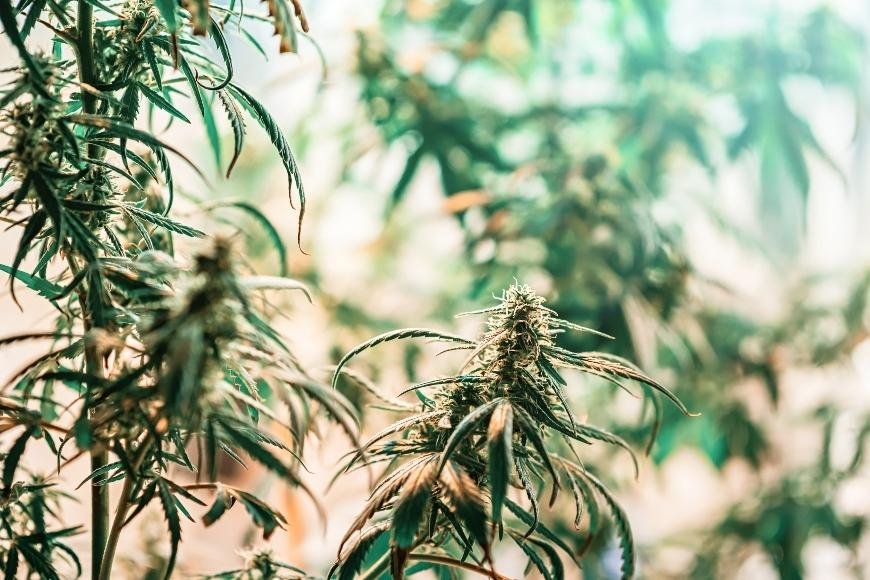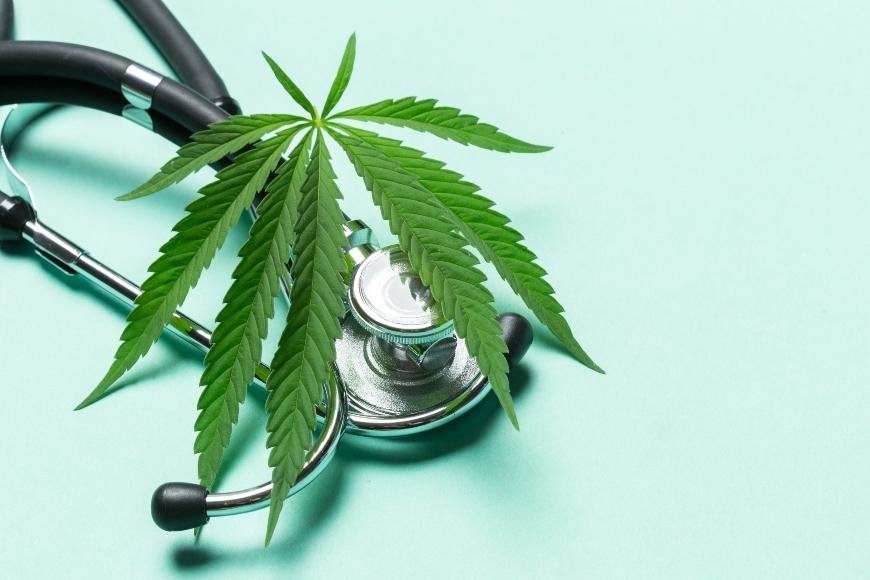The Best Medical Cannabis Strains
Discover the best medical cannabis strains for various health conditions, their benefits, and tips on cultivation and consumption in our comprehensive guide.

With a vast selection of strains to choose from, medical cannabis offers patients the opportunity to find relief for their ailments. As research continues to advance our understanding of medicinal cannabis, new and improved strains are being developed to cater specifically to patients' needs.
In this blog post, we will delve into the world of medical marijuana and explore its numerous benefits. We'll guide you through choosing the right strain for your specific condition and introduce you to the top 10 medical marijuana strains that have gained popularity among users.
Furthermore, we'll discuss cultivating medical cannabis at home as well as proper methods for consuming it safely and effectively. Finally, we will touch upon the legal status of medical marijuana in different regions around the world. Come along on this voyage of improved well-being with a portion of the top therapeutic cannabis strains accessible today.
Table of Contents:
- What is Medical Marijuana?
- Benefits of Medical Cannabis
- Choosing the Right Strain
- The Best Medical Marijuana Strains
- Cultivating Medical Cannabis
- Consuming Medical Marijuana
- Legal Status of Medical Marijuana
- Conclusion
What is Medical Marijuana?
Medical marijuana refers to the use of cannabis plants or their derivatives for treating various medical conditions and symptoms. The active components of cannabis, delta-9-tetrahydrocannabinol (THC) and cannabidiol (CBD), are responsible for its medicinal effects; the former being associated with psychoactive properties while the latter is renowned for its non-intoxicating benefits. THC is known for its psychoactive properties, while CBD has gained popularity due to its non-intoxicating benefits.
The legal status of medical marijuana varies across different countries and states, with some jurisdictions allowing its use under specific circumstances. In places where it's legal, patients typically need a prescription from a healthcare professional and a valid medical marijuana card.
Cannabis can be consumed in various forms such as smoking, vaporizing, edibles, tinctures, or topicals depending on the patient's preference and condition being treated. Some common medical conditions that may benefit from cannabis include:
- Chronic pain management
- Anxiety relief
- Treating depression symptoms
- Epilepsy control (especially with high-CBD strains)
- Nausea reduction during chemotherapy treatments
Before utilizing cannabis for medical purposes, consulting with a healthcare professional to decide the best strain and dosage for individual needs is essential.
Medical Marijuana is a type of therapeutic approach which takes advantage of the cannabis plant for medicinal purposes. The next heading will discuss some of the many benefits associated with using Medical Cannabis as an alternative medicine.

Benefits of Medical Cannabis
Medical cannabis has gained significant recognition in recent years for its potential to alleviate symptoms and improve the quality of life for patients suffering from various medical conditions. Some of the most common benefits associated with medical marijuana include:
- Pain relief: Cannabis is known to be effective in managing chronic pain, making it a popular alternative to opioids and other prescription painkillers. Studies have shown that cannabinoids like THC and CBD can help reduce inflammation and neuropathic pain, providing relief for those dealing with arthritis, fibromyalgia, migraines, and more.
- Anxiety reduction: Many users report feeling less anxious after consuming cannabis strains high in CBD or balanced THC/CBD ratios. Research suggests that these compounds may interact with serotonin receptors in the brain, promoting relaxation and reducing anxiety levels.
- Easing depression symptoms: Certain strains of cannabis have been found to help elevate mood by increasing dopamine production in the brain - a neurotransmitter responsible for feelings of pleasure and reward.
- Treating seizures: High-CBD strains such as Charlotte's Web are renowned for their ability to reduce seizure frequency among epilepsy patients - particularly children who suffer from Dravet syndrome or Lennox-Gastaut syndrome.
Therefore, it is essential to consider individual differences such as genetics, metabolism, and tolerance levels before deciding on a medical cannabis regimen. Consequently, it is essential to seek advice from a medical expert prior to including cannabis in your treatment plan.
Medical cannabis can offer a range of advantages, from soothing long-term ache to moderating worry and despondency. Selecting the appropriate strain to acquire the preferred results is essential, as there are numerous varieties accessible.
Choosing the Right Strain
Selecting a cannabis strain that best suits your needs and preferences is crucial for obtaining optimal therapeutic benefits. There are several factors to consider when choosing a medicinal cannabis strain, including its cannabinoid profile, terpene content, potency, and effects.
Cannabinoid Profile
The two primary cannabinoids found in cannabis are Tetrahydrocannabinol (THC) and Cannabidiol (CBD). THC is known for its psychoactive properties while CBD has non-psychoactive effects. Some strains have high levels of THC or CBD, while others offer a balanced ratio of both compounds. Depending on your condition and desired effects, you may prefer strains with higher concentrations of either THC or CBD. For example, patients seeking relief from chronic pain might opt for high-CBD strains, whereas those looking to alleviate anxiety could benefit from balanced ratios.
Terpenes
Terpenes are aromatic compounds responsible for the unique flavors and scents of different cannabis strains. They also play an essential role in modulating the overall effects of cannabinoids on our bodies. Pay attention to terpene profiles when selecting a strain as they can enhance specific medicinal properties such as relaxation or focus.
Potency & Effects
- Potency: The strength of a cannabis strain depends on its cannabinoid concentration; higher percentages indicate stronger effects.
- Effects: Different strains produce varying effects, ranging from uplifting and energizing to calming and sedating. Consider the desired outcome when choosing a strain for your medicinal needs.
Advise with a medical professional prior to employing cannabis for medicinal applications, as they can help you in selecting the right strain depending on your individual situation and wishes.
Selecting the optimal strain of medical cannabis is essential for maximizing your experience. Figuring out which strain to go with can be tricky, given the abundance of choices. Now that we've discussed how to choose a strain, let's take a look at some of the top 10 medical marijuana strains currently on offer.
The Best Medical Marijuana Strains
Discover the best cannabis strains that offer a range of therapeutic benefits for various health conditions. Each strain has its unique effects, potency, and taste profiles to cater to individual preferences.
- ACDC: A high-CBD strain known for its pain-relieving properties and minimal psychoactive effects. ACDC is ideal for patients seeking relief without feeling "high."
- Charlotte's Web: Another high-CBD strain famous for treating epilepsy in children, particularly Dravet Syndrome.
- Hindu Kush: An indica-dominant strain with potent sedative effects, perfect for managing insomnia and chronic pain.
- Sour Diesel: A sativa-dominant hybrid offering energizing and uplifting effects that can help combat depression and fatigue.
- Pineapple Express: This well-balanced hybrid provides a mood-boosting effect while reducing stress levels, perfect for anxiety sufferers.
- Northern Lights: An iconic indica cultivar that delivers a calming, relaxing experience to alleviate stress and anxiety.
- Blue Dream: A sativa-dominant hybrid known for its full-body relaxation and cerebral invigoration, ideal for managing pain, depression, and nausea.
- Haze Berry: This fruity strain offers an uplifting high that can help with mood disorders while also providing physical relief from pain.
- Ringo's Gift: A CBD-rich strain that provides significant relief from inflammation, making it suitable for patients with arthritis or other inflammatory conditions.
- Critical Mass: An indica-heavy cultivar ideal for treating chronic pain due to its potent sedative effects.
Remember to consult your healthcare professional before using medicinal cannabis strains to ensure safe consumption tailored to your specific needs.
Medical marijuana has gained popularity as a form of therapy for many conditions, and this compilation gives an outline of the leading 10 therapeutic cannabis varieties accessible. To ensure optimal results, it is important to understand the cultivation process of medical marijuana.
Cultivating Medical Cannabis
Growing your own medical cannabis can be a rewarding and cost-effective way to ensure you have access to the strains that best suit your needs. Before starting, it's essential to research local laws regarding cultivation and possession of marijuana plants. Here are some tips for cultivating medical cannabis safely and responsibly:
- Choose the right strain: Based on your specific condition or symptoms, select a strain with the appropriate balance of THC and CBD levels. You can refer back to our Top 10 Medical Cannabis Strains list as a starting point.
- Select proper growing conditions: Ensure you provide an optimal environment for your plants by considering factors such as lighting, temperature, humidity, and air circulation.
- Nutrients and water: Supplying adequate nutrients and water is crucial for healthy plant growth. Research the specific nutrient requirements for each stage of growth (vegetative vs flowering).
- Pest control: Keep an eye out for pests such as spider mites or aphids that may harm your plants. Employ organic pest control methods when possible.
- Harvesting and curing: Properly harvesting and curing your cannabis plants will ensure the best possible taste, potency, and medicinal benefits.
Taking these steps will help you cultivate high-quality medicinal cannabis that caters specifically to your needs while ensuring a safe growing experience.
Growing medical cannabis can be a gratifying and curative practice, yet it is essential to look into beforehand in order to guarantee that you are cultivating the ideal strain for your requirements. Moving on, consuming medical marijuana requires careful consideration of dosage as well as an understanding of how different strains affect one's body differently.

Consuming Medical Marijuana
When it comes to consuming medical marijuana, there are various methods available that cater to different preferences and needs. It's essential to choose a method that provides the desired effects while minimizing potential risks.
Inhalation Methods
Vaporizing: Vaporizing, or vaping, is a popular method for consuming cannabis as it heats the plant material without combustion, reducing harmful toxins. This allows users to experience immediate relief with less irritation on their lungs compared to smoking.
Smoking: Smoking remains a common way of using medical marijuana due to its rapid onset of effects. However, this method may cause respiratory irritation and not be suitable for everyone.
Eating and Drinking Cannabis Products
Edibles: Edible products such as cookies, brownies, and gummies offer an alternative for those who prefer not to inhale cannabis. Keep in mind that edibles have a delayed onset time (typically 30 minutes - 2 hours) but provide longer-lasting effects than inhalation methods.
Tinctures: Tinctures are liquid extracts taken under the tongue or added into food/drinks which allow precise dosing control. They're ideal for patients seeking fast-acting relief without inhalation or digestion concerns. Learn more about tinctures here.
Cannabis Topicals & Transdermals
- Creams & Balms: Cannabis-infused creams and balms can be applied directly to the skin for localized relief from pain, inflammation, or skin conditions.
- Transdermal Patches: These patches deliver a steady dose of cannabinoids through the skin over time, providing long-lasting effects without psychoactive experiences. They're suitable for patients seeking consistent relief throughout the day.
Always consult with your healthcare professional before trying any new consumption method and start with low doses to gauge its effectiveness on your symptoms.
Before examining the legal status of medical marijuana, it is essential to be mindful of its potential benefits for those with certain conditions and to ensure that consumption is done responsibly. Moving on, let's take a look at the legal status of medical marijuana across different countries and states.
Legal Status of Medical Marijuana
The legal status of medical marijuana varies greatly depending on the country or state you reside in. While some places have fully legalized cannabis for both medicinal and recreational use, others only allow it for specific medical conditions with a valid prescription from a healthcare professional.
Tips to Navigate Legalities:
- Educate yourself: Research your local laws regarding medical marijuana usage to ensure compliance with all regulations.
- Talk to your doctor: Consult with a healthcare professional about obtaining a prescription if required in your jurisdiction.
- Obtain a medical marijuana card: In some places, you may need to apply for a medical marijuana card in order to legally access and use cannabis for medicinal purposes.
Please note that the information provided here is not legal advice, and it is essential to stay informed about any changes in your local laws regarding medical cannabis.
Conclusion
Medical cannabis has been a long-utilized remedy for numerous medical issues, with its use stretching back centuries. In recent years, it has gained popularity due to its effectiveness in treating chronic pain, anxiety, and other health issues. By exploring the potential of medical marijuana and selecting a suitable strain, it is possible to find relief from symptoms.
When it comes to choosing the right strain, it's important to consider the medicinal properties of each strain. Sativa strains are known for their uplifting effects and are often used to treat depression and anxiety. Indica strains, on the other hand, are known for their relaxing effects and are often used to treat chronic pain and insomnia.
Some of the most popular strains for medicinal purposes include:
- Blue Dream: A sativa-dominant hybrid that is known for its relaxing effects and ability to relieve pain and depression.
- Girl Scout Cookies: A hybrid strain that is known for its ability to relieve pain, nausea, and anxiety.
- OG Kush: An indica-dominant hybrid that is known for its ability to relieve stress, anxiety, and pain.
- White Widow: A hybrid strain that is known for its ability to relieve pain, stress, and depression.
- Granddaddy Purple: An indica strain that is known for its ability to relieve pain, stress, and insomnia.
When it comes to cultivating and consuming medical cannabis, it's important to understand the legal status of cannabis in your area. In some areas, cannabis is legal for medicinal purposes, while in others it is still illegal. It's also important to understand the proper drug administration methods for consuming cannabis, such as smoking, vaping, or using edibles.






































































































































